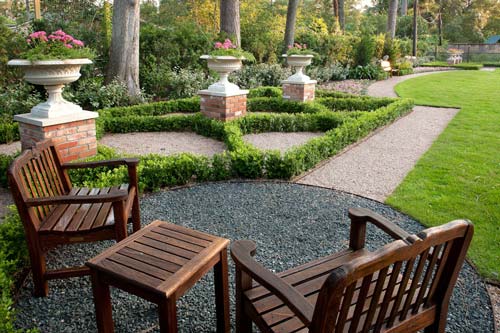How To Design A Parterre Garden – Key Points To Consider

Parterre gardens are a harmonious mix of artistry, horticulture and history dating back to Renaissance Europe. These intricately designed spaces continue captivate us with their geometric precision and vibrant colors. Planning and paying attention to details are essential for creating a beautiful parterre. This guide will help you to design your own parterre gardens, creating a masterpiece that is timeless and reflects your style.
Understanding Parterre Gardens
Parterre gardens have symmetrical designs, with pathways, hedges and flowerbeds arranged in geometric patterns. They were traditionally located near palaces and stately homes as ornamental displays to show wealth and status. Parterre gardens are available in a variety of sizes, ranging from large estates to small courtyards. They add a touch elegance and sophistication to any outdoor environment.
Important Points to Remember
- Site selection and Layout : Select a location that is suitable for your parterre gardens, taking into consideration factors like sunlight exposure, soil type, and the surrounding landscape. The layout of your garden should compliment the architectural features on your property, while also allowing for easy maintenance and accessibility.
- Design Inspiring: Take inspiration from historic parterre gardens such as those at Versailles and Villandry as well as modern interpretations. Explore geometric patterns such as symmetrical, maze-like, or radial designs. Also, consider adding elements like water features, topiary, sculptures and other decorative items.
- Plant selection: Select plants that will not only improve the appearance of your garden, but also thrive under your local soil and climate conditions. Mix annuals with perennials and evergreens for year-round color and interest. To create dynamic compositions, consider the height, texture and blooming time of each plant.
- Hardscape Element: Use hardscape elements like pathways, edging and focal points to define your parterre gardens. Materials like gravel, brick and stone add texture and contrast while architectural features, such as pergolas and arbors, provide vertical interest and shading.
- Maintenance considerations: Plan on ongoing maintenance in order to keep your parterre looking its best all year round. Regular pruning, weeding, fertilizing and watering are all part of this. Seasonal tasks like mulching and winter protection also fall under this category. When selecting plants and features for your garden, consider the time and resources needed to maintain it.
- Sustainability: Include sustainable practices in your garden design. For example, water-efficient irrigation, native plants, and organic gardening techniques. Prioritize biodiversity and minimize chemical inputs to create an ecosystem that is resilient and healthy.
- Safety and Accessibility: Make sure that your parterre is accessible for all users including those who have mobility issues. Consider installing handrails and ramps if necessary. Design seating and pathways with smooth surfaces, adequate lighting and good lighting. Include safety features like non-slip surfaces and sturdy edges to avoid accidents.
- Timeline and Budget: Create a realistic timeline and budget for your parterre gardening project. Take into consideration the cost of labor, materials, and ongoing maintenance. Prioritize the most important elements and consider a phased approach if you need to. Be ready to adjust your plans if necessary based on the available resources and unexpected challenges.
Conclusion
A parterre garden requires creativity, planning and attention to details. Consider the points in this guide to create a masterpiece that will reflect your style and enhance the beauty of your outdoor area. The principles of parterre offer endless possibilities for expression and enjoyment, whether you are starting from scratch or rejuvenating an existing garden.




Leave a Reply